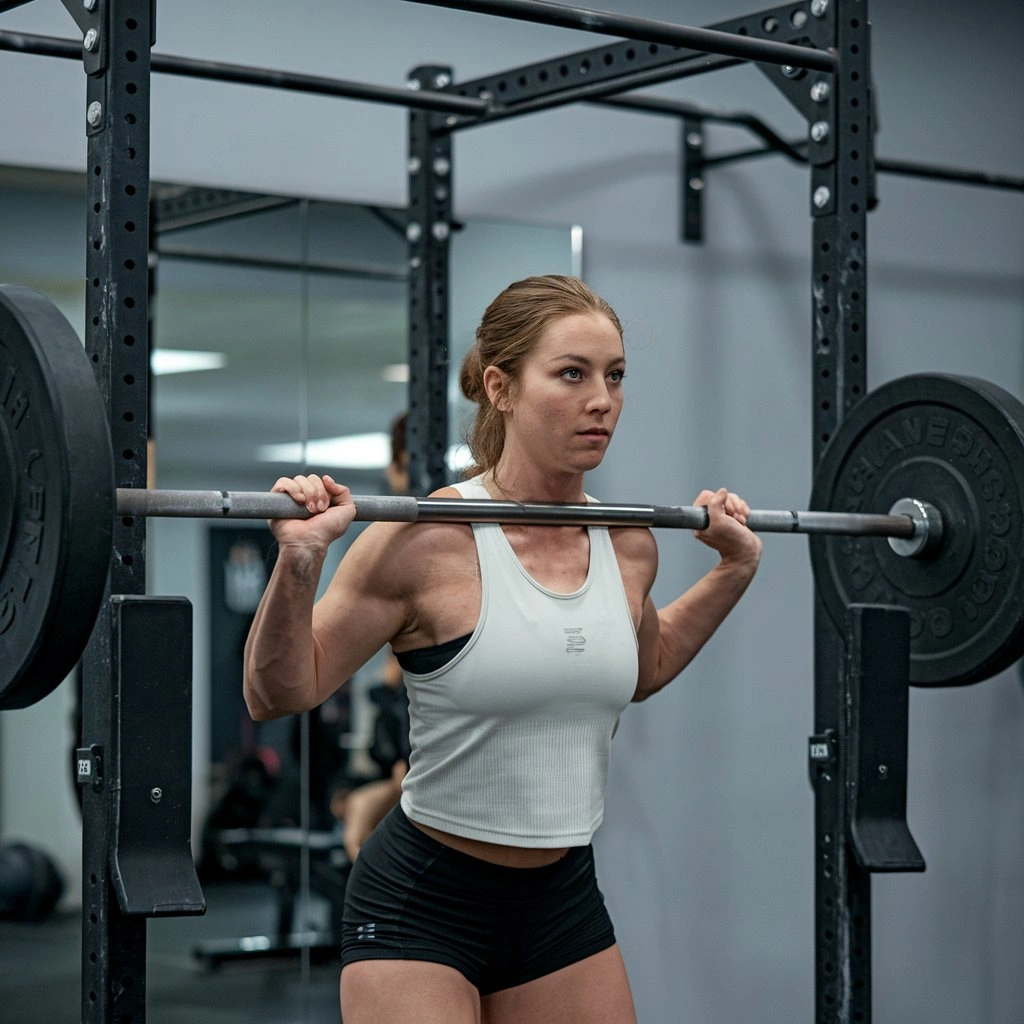Barbells are the cornerstone of strength training. They embody power, endurance, and resilience. It is a key tool in any workout. It is used by both seasoned athletes and fitness novices. The barbell guide is versatile and effective.
In this deep dive, we explore the diverse world of barbells. We uncover the many types, materials, and factors that shape strength training. As we start, we’ll see the parts of Traditional Barbells.
We’ll also look at the special features of specialty types. And, we’ll learn about the details of materials and coatings. You might be a dedicated weightlifter, a CrossFit fan, or just curious about barbells. This guide will help you understand the many barbell options.
Join us. We will navigate the ins and outs of barbell selection, care, and maintenance. You will find the perfect barbell to boost your strength training journey. Traditional barbells have a classic appeal. Specialty variants have innovative designs.
There is a barbell suited to every lifter’s goals and preferences. Get ready to go on a journey through the world of barbells. In this place, strength knows no limits and the possibilities are limitless. Let’s dive in and unlock the secrets to unleashing your full potential with the power of the barbell.
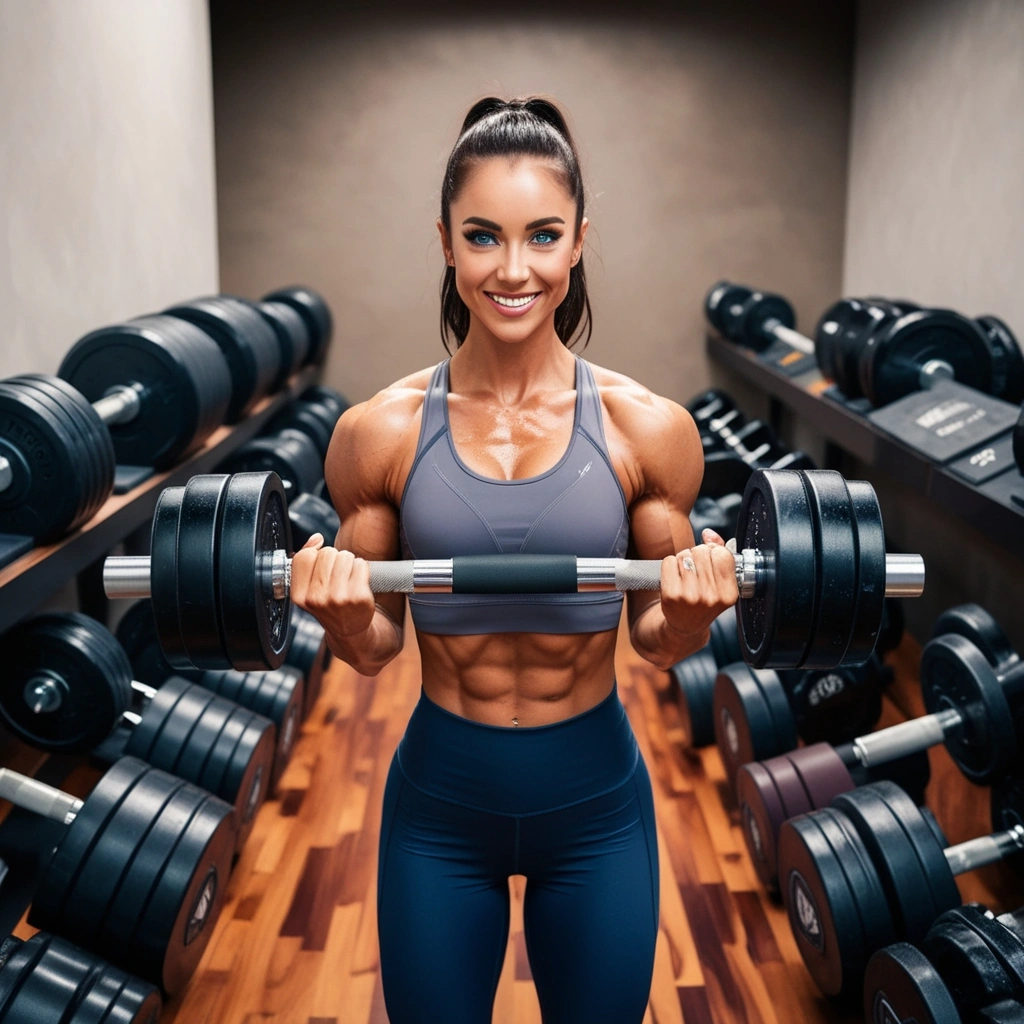
Traditional Barbells
People have long revered barbells. They are the foundation of strength training. They are simple, durable, and effective. In this section, we’ll look at the core of traditional barbells. We’ll explore their description, parts, and common uses.
Description and Components
- Traditional barbells consist of a long metal shaft. Weighted plates are secured on each end. The shaft usually has knurling. Knurling is a textured pattern. It makes the bar easier to grip and stops slipping during lifts.
- The sleeves, located at each end of the barbell, are designed to accommodate weight plates. They often feature rotating collars or bearings. These allow smooth rotation of the plates during lifts. They reduce stress on the lifter’s wrists and joints.
- Traditional barbells come in various lengths and widths. They accommodate different lifting styles. Most barbells have a 28-29mm diameter. But, this varies based on use and user preference.
Standard vs. Olympic Barbells
- Standard barbells are also known as “standard” or “regular” bars. They are for general strength training. They typically have a smaller diameter, around 1 inch. This size fits standard weight plates with 1-inch holes.
- Olympic barbells are different. They are made to meet the rules of the International Weightlifting Federation (IWF). The rules are for Olympic weightlifting. They are wider, typically 28-29mm. They are made to endure heavy lifting and dynamic movements.
- Olympic barbells have set dimensions. They are about 7 feet long and weigh about 20 kg for men and 15 kg for women. This makes them good for competitive weightlifting and serious strength training.
Common Uses and Exercises
- Traditional barbells are very versatile. They can be used for a wide range of strength exercises. These include squats, deadlifts, bench presses, rows, and overhead presses.
- They are key for compound movements. These movements target many muscles at once. Bands are vital for building strength, muscle mass, and functional fitness.
- Traditional barbells are also commonly used in powerlifting, bodybuilding, CrossFit, and functional fitness workouts, where they form the cornerstone of strength and conditioning programs.
Traditional barbells show the timeless appeal of strength training. They offer a simple but effective way to reach fitness goals. You may be doing classic lifts like squats and deadlifts. Or, you may be doing dynamic Olympic lifts. In both cases, the old-style barbell is a key tool on the path to strength and health.
Specialty Barbells
While traditional barbells serve as the backbone of strength training, specialty barbells offer unique variations tailored to specific exercises and lifting techniques. Let’s explore some of the most popular specialty barbells:
EZ Curl Bar

- The EZ curl bar has a curved design. It has angled hand placements. This design is great for targeting the biceps and upper arm muscles. It works well for curling exercises.
- Its shape is ergonomic. It reduces strain on the wrists and elbows. This allows for more comfortable and controlled lifting. The EZ curl bar is commonly used for bicep curls, tricep extensions, and preacher curls.
Trap Bar (Hex Bar)
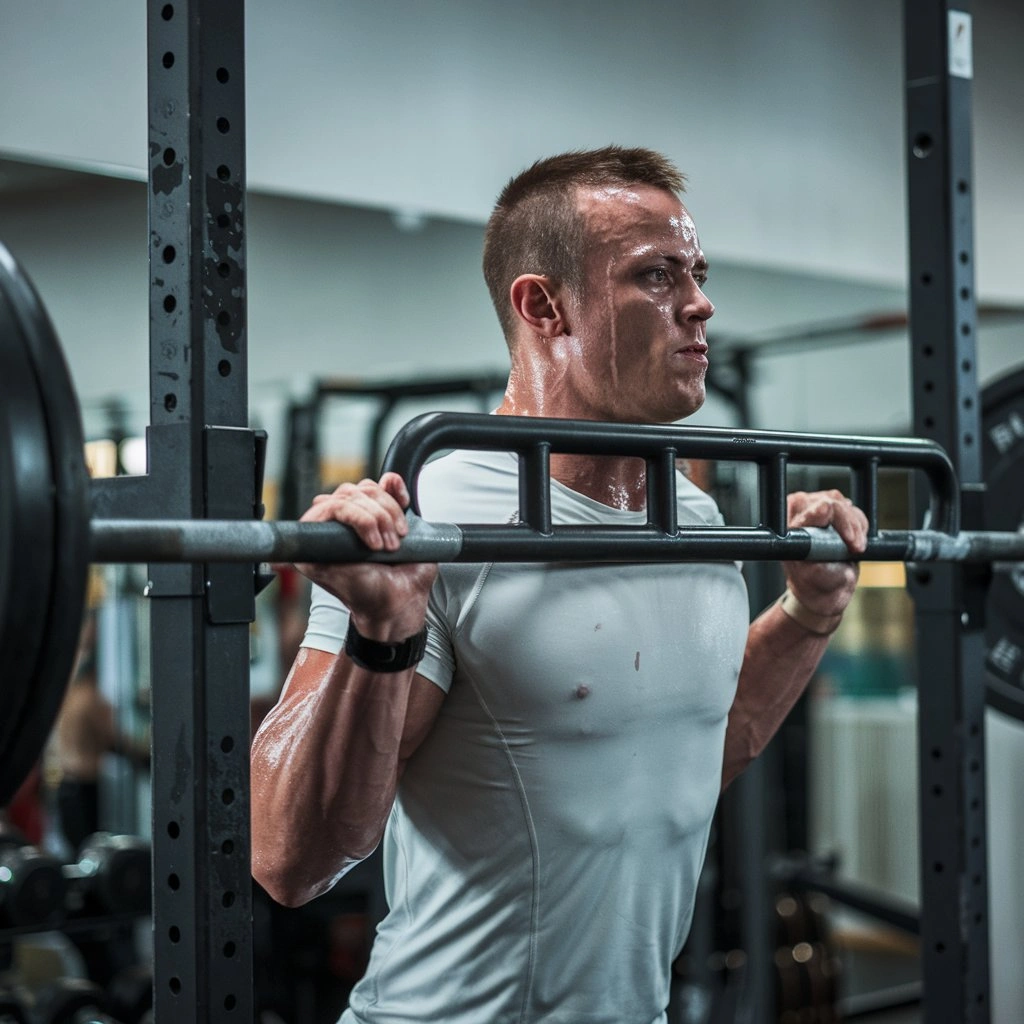
- The trap bar is also known as the hex bar due to its hexagonal shape. It offers a versatile alternative to traditional barbells for deadlifts and shrugs.
- The trap bar has a unique design. It allows for a more neutral grip and centers the weight on the lifter’s gravity. This reduces stress on the lower back and spine.
- Athletes and people with lower back issues love the trap bar. They see it as a safer and more ergonomic option for heavy lifting.
Swiss Bar (Football Bar)
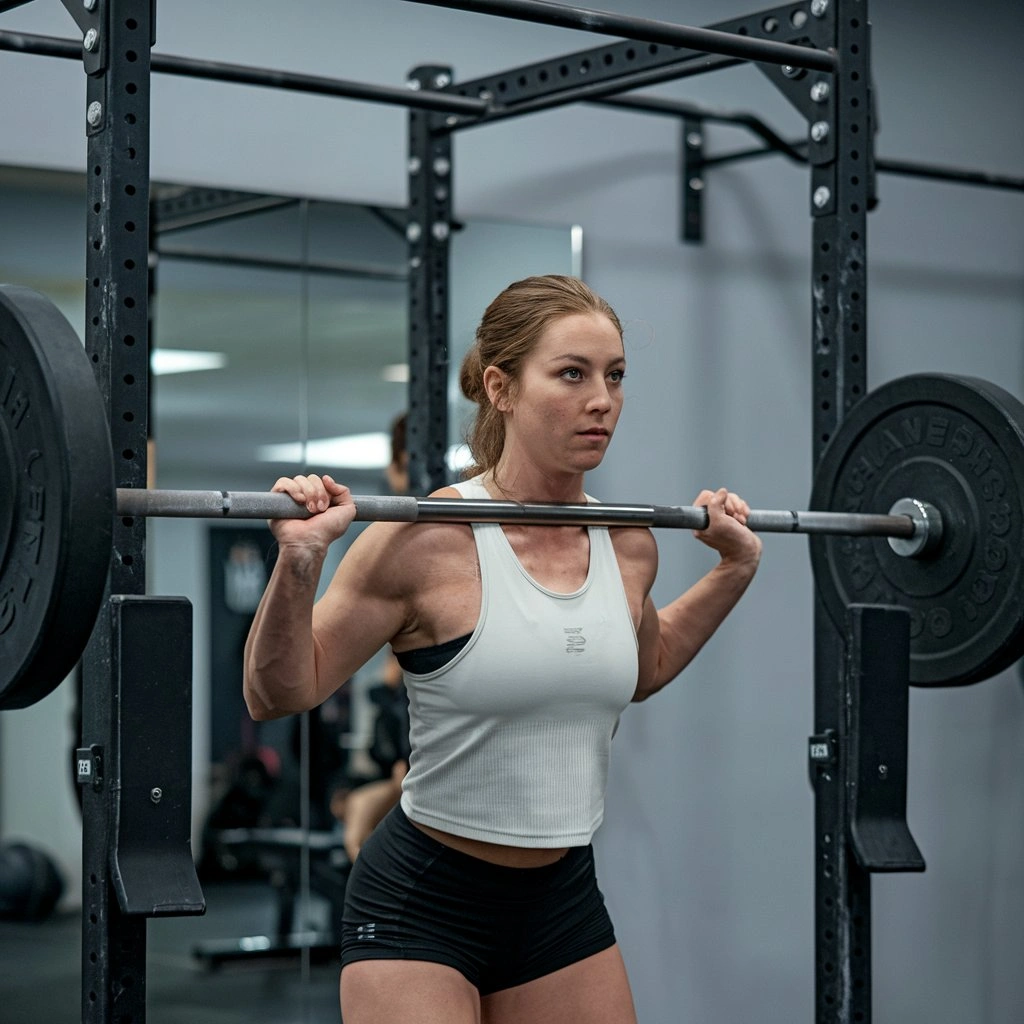
- The Swiss bar has multiple names: the football bar or the multi-grip bar. It has neutral grip handles set at different widths. This allows for a variety of grip positions.
- This versatile barbell is well-suited for bench presses, overhead presses, rows, and tricep extensions, offering greater stability and shoulder comfort compared to standard barbells.
- The Swiss bar lets users target different muscle groups. It works with various shoulder widths. This makes it an excellent choice for athletes, powerlifters, and strength training fans.
Safety Squat Bar
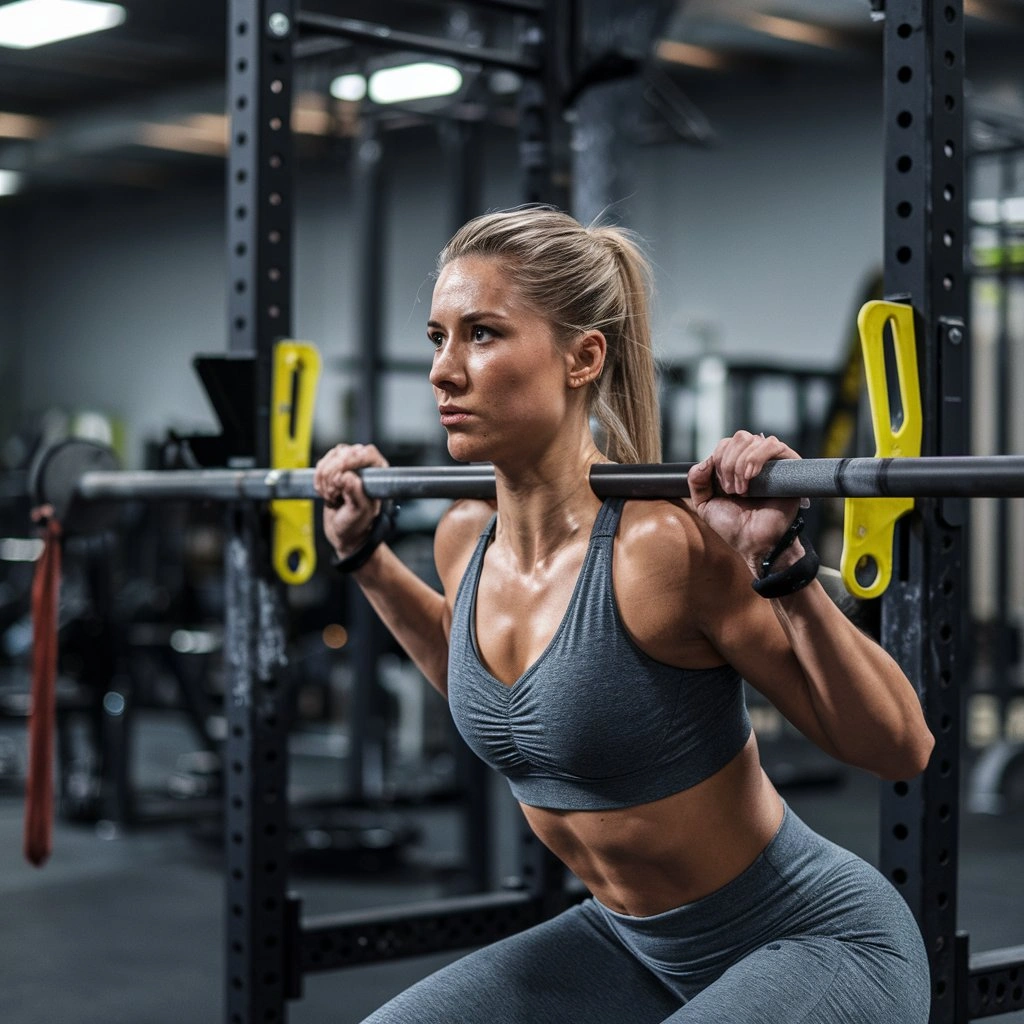
- The safety squat bar has a padded yoke and a forward-leaning design. It is made to reduce stress on the shoulders, wrists, and lower back during squats.
- The bar shifts the weight to the front of the body. This makes the torso more upright and keeps proper squatting form. These traits make it ideal for people with mobility or flexibility limits.
- The safety squat bar is common in powerlifting, bodybuilding, and rehab. It is used to safely and effectively build lower body strength and muscle.
Cambered Bar
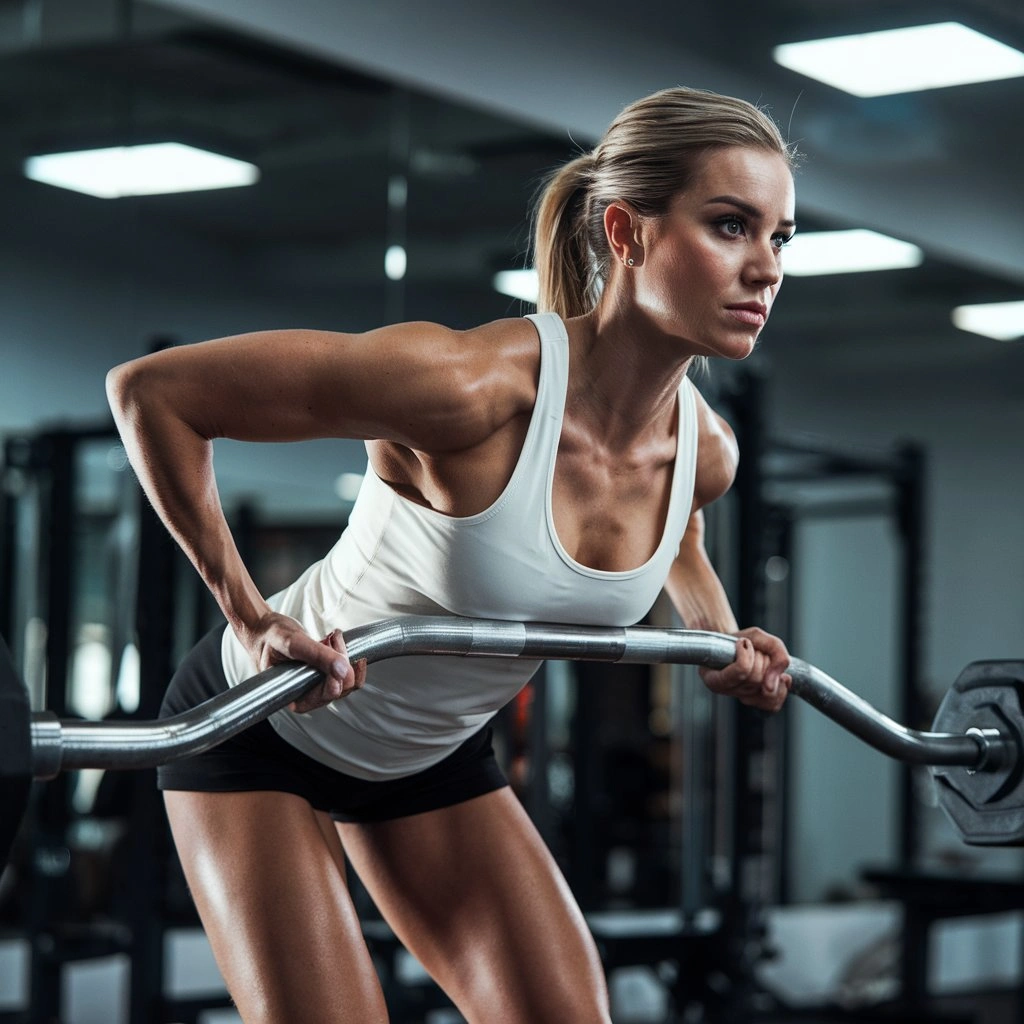
- The cambered bar, also called the “Manta Ray” bar, has a curved or angled shaft. It lets the lifter place it more naturally and comfortably on their back during squats.
- The cambered bar reduces pressure on the spine and shoulders. It helps improve squat form and technique. So, it is good for people with mobility issues. It also helps those with discomfort when using traditional barbells.
- The bent bar is often used for training. It reinforces proper squatting and builds lower body strength and stability.
Buffalo Bar
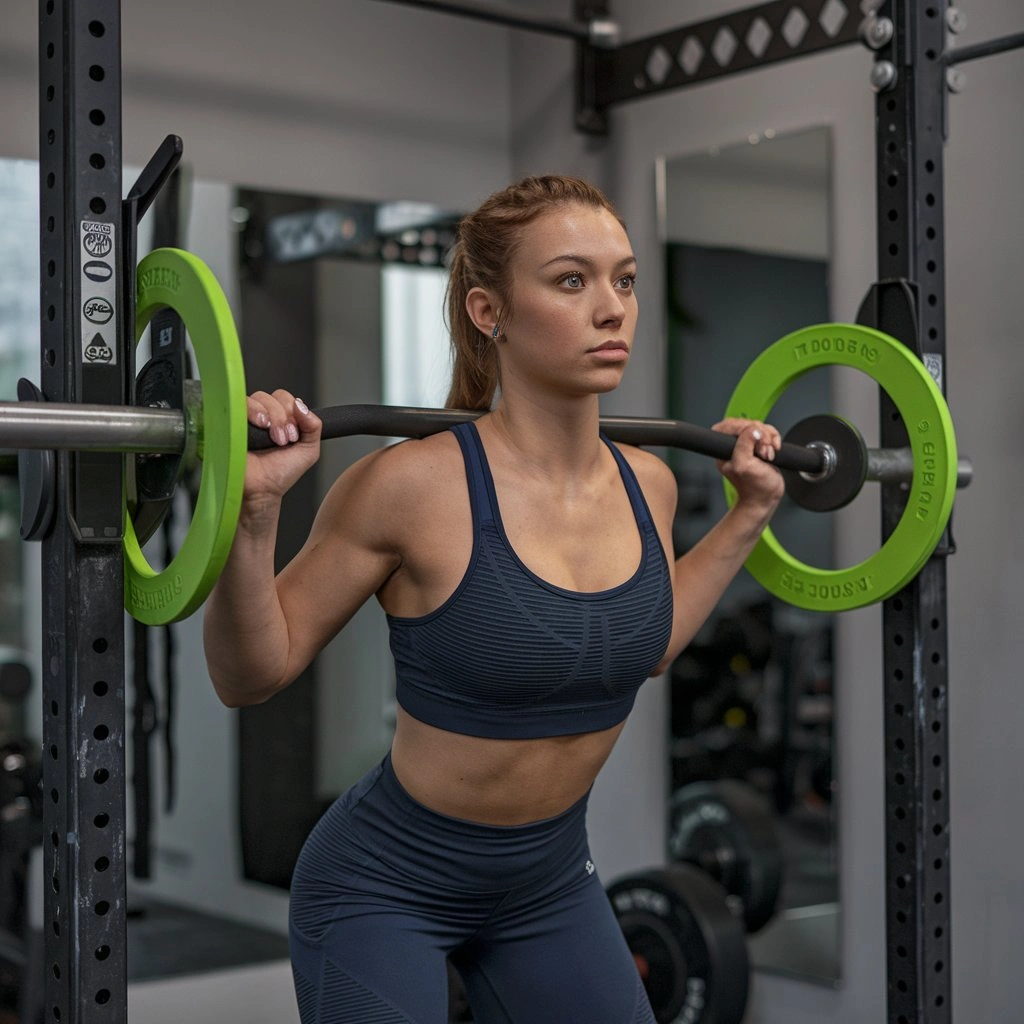
- The Buffalo bar is named for its resemblance to the hump of a buffalo. It has a curved shaft that gives a more ergonomic grip. This grip reduces strain on the shoulders and wrists during bench presses.
- This special barbell allows for a more natural range of motion. It also allows for better shoulder alignment. It is a great choice for people with shoulder pain or limited mobility.
- The Buffalo bar is popular in powerlifting and strength training. It is used to improve bench press performance and cut the risk of shoulder injuries.
Axle Bar
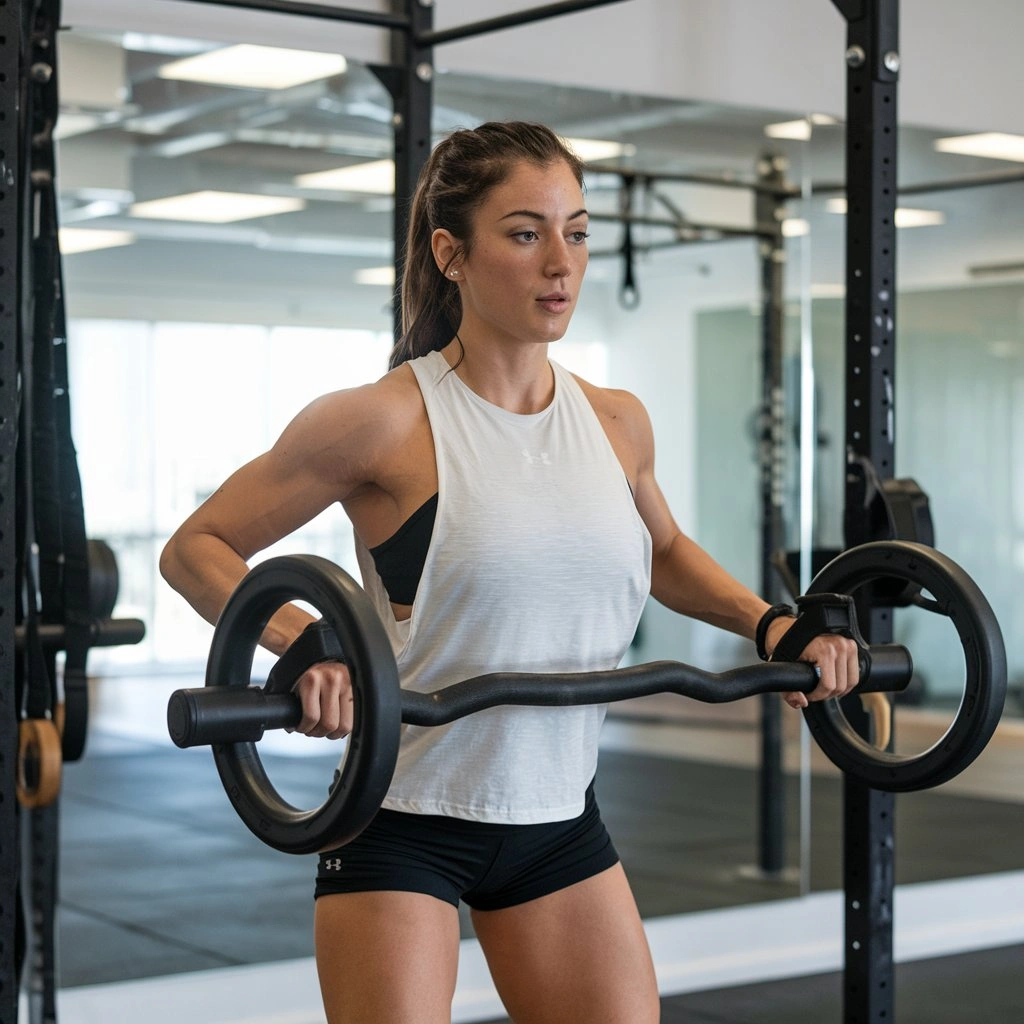
- The axle bar is also known as the thick bar or fat bar. It has a larger shaft than traditional barbells. This makes it challenges grip strength and forearm muscles during lifts.
- Increasing the barbell’s diameter makes the axle bar harder to grip and control. This makes it a great tool for building forearm and hand strength.
- The axle bar is often used in strongman training. It’s also used in grip strength competitions and functional fitness workouts. It is used to improve overall strength and performance.
Specialty barbells offer a diverse range of options to suit individual preferences, training goals, and physical capabilities. You may want to target certain muscles or ease lift discomfort. Or, you may want to test your grip strength. If so, there’s a specialty barbell for you.
Material and Coating Options
Barbells come in many materials and coatings. Each has unique benefits. They affect durability, grip, and looks. Let’s explore some of the most common material and coating options available:
Steel Barbells
- Steel barbells are the classic choice for strength training. They are known for being durable, stable, and reliable. They are usually made from high-quality carbon or stainless steel. This gives them great strength and resistance to bending or warping.
- Steel barbells offer a natural and solid feel. They are good for heavy lifting and powerlifting. They are also easy to maintain and clean. They need little upkeep to keep looking good and working well.
Chrome-Coated Barbells
- Chrome-coated barbells have a layer of chrome plating on the steel shaft. This creates a smooth and shiny finish. It makes the barbells more durable and better at resisting corrosion. Chrome plating also gives a sleek look. This makes these barbells popular in commercial gyms and fitness centers.
- Chrome-coated barbells resist rust well. They also resist chipping or scratching. This ensures they last long and look good. They are easy to clean. You just need to wipe them occasionally with a damp cloth to remove sweat and debris.
Rubber-Coated Barbells
- Rubber-coated barbells have a layer of rubber or urethane coating on the steel shaft. This coating gives added protection against impact and reduces noise during lifts. The rubber coating also improves grip and comfort. It makes these barbells ideal for high-rep exercises and functional fitness workouts.
- Rubber-coated barbells are less likely to damage floors or other equipment when dropped. They are a safe and practical option for home gyms or shared workout spaces. They also resist corrosion and moisture. This makes them last longer and stay usable in damp places.
Cerakote Barbells
- Barbell shafts are made of steel. They are coated in a ceramic-based finish called Cerakote. It offers unmatched durability, scratch resistance, and color options. Cerakote coating has a smooth, matte finish. It boosts grip and cuts friction during lifts.
- Cerakote-coated barbells resist corrosion, abrasion, and chemical damage. They are ideal for outdoor use, humid places, or tough training. They come in many colors and designs. This lets users personalize their barbells to match their tastes or gym decor.
Each material and coating option has clear benefits. They help with performance, looks, and durability. You might prefer the classic appeal of steel. Or, the sleekness of chrome. Or, the versatility of rubber. Or, the durability of Cerakote.
There’s a barbell option for your needs and preferences. Consider grip, maintenance, and budget. Use them to choose the right material and coating for your barbell.
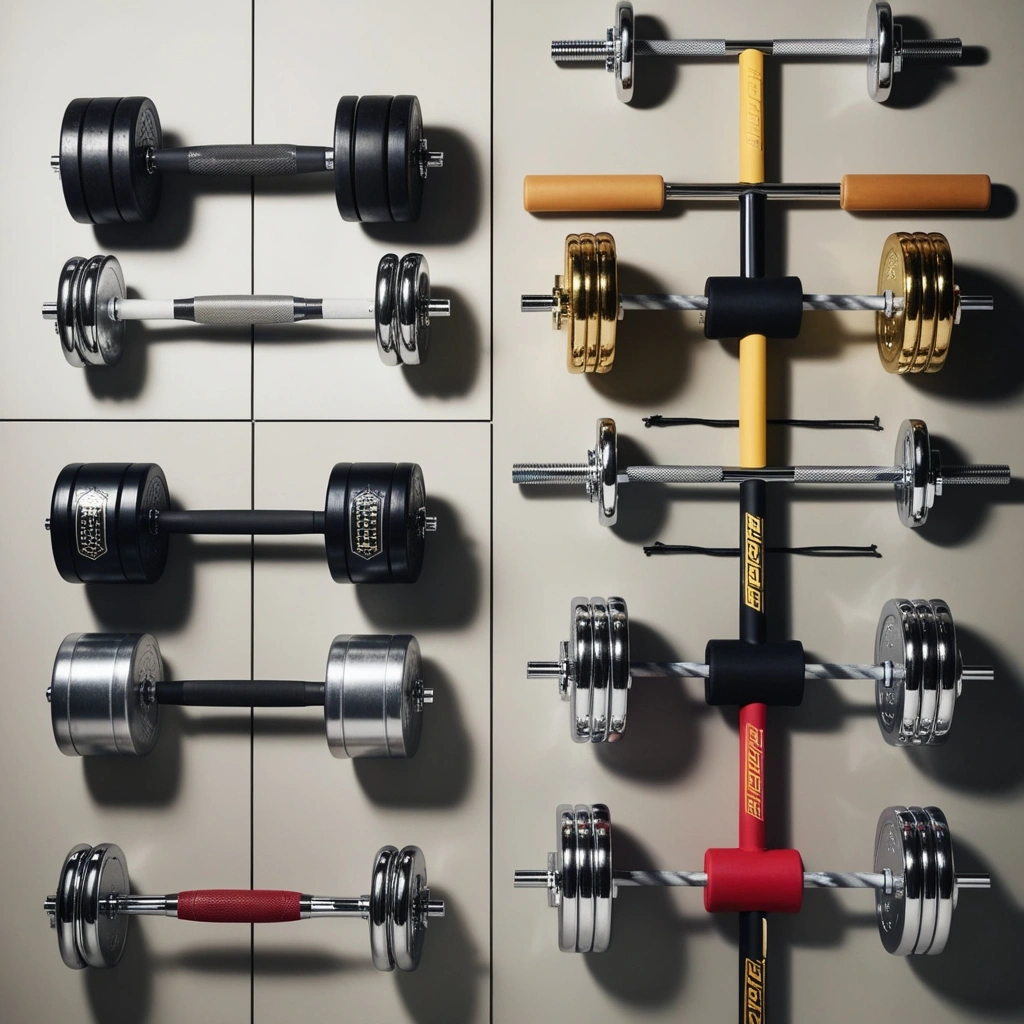
Considerations When Choosing a Barbell
Picking the right barbell requires considering many key factors. You must ensure it meets your needs and preferences. Here are some essential considerations to keep in mind:
Weight Capacity and Load Rating
- Find the barbell’s max weight or load rating. This rating shows the most weight it can safely support without bending or breaking. Choose a barbell with a weight capacity that fits your lifting goals. Also, make sure it can handle your progress.
- Consider whether you’ll be doing heavy lifting, powerlifting, or Olympic lifts. Each type of exercise may need different weight limits. Opt for a barbell with a higher load rating if you plan to lift heavy or increase weight over time.
Knurling and Grip
- Evaluate the knurling pattern. It affects your ability to keep a secure grip on the barbell. Look for a barbell with medium to strong knurling. It gives enough grip but won’t hurt or irritate the skin.
- Consider the spacing and depth of the knurling. Also, look for center knurling. It adds stability during squats and front-loaded exercises. Test the grip of the barbell to ensure it feels comfortable and secure in your hands.
Shaft Diameter and Length
- Find the diameter and length of the barbell shaft. These factors influence its stability, rigidity, and suitability for different lifting techniques. Choose a shaft diameter that fits your grip preference and hand size. They are typically 25mm to 32mm for standard barbells.
- Consider the length of the barbell shaft. Standard barbells are typically 7 feet for Olympic lifts. Shorter ones exist for specialty bars or limited spaces. Make sure the barbell fits in your workout space. It should allow for full motion during exercises.
Sleeves and Bearings
- Examine the design of the barbell sleeves. Note the type of bearings or bushings. They are used for the smooth rotation of weight plates. Look for barbells with good bearings or bushings. They give a smooth spin and reduce friction during lifts.
- Consider if you prefer barbells with needle bearings for fast rotation. They are ideal for Olympic lifts. Or, you can choose bushings for added stability and durability. They are good for powerlifting or general strength training.
Budget and Price Range
- Decide your budget for buying a barbell. Consider factors such as material, coating, brand, and extra features. Compare prices across retailers and brands. Do this to find the best value for your budget.
- Remember, budget options give basic performance. But, a better barbell is more durable and satisfying in the long term.
Popular Brands and Manufacturers
Many brands make barbells. Each has a reputation for quality, innovation, and performance. Let’s explore some top barbell brands. We’ll also look at what to consider when choosing a brand.
Overview of Leading Barbell Brands
Rogue Fitness
Rogue is renowned for producing high-quality barbells designed for CrossFit, powerlifting, Olympic weightlifting, and general strength training. Their barbells are known for their durability, precision engineering, and innovative features.
Eleiko is a Swedish company. It is known for making premium barbells. They are used in competitive weightlifting and strength training worldwide. Their barbells are renowned for their exceptional craftsmanship, performance, and precision.
American Barbell
American Barbell specializes in manufacturing barbells for powerlifting, Olympic weightlifting, and functional fitness. Their barbells are known for their quality construction, durability, and attention to detail.
CAP Barbell
CAP Barbell offers many affordable barbells. They are suitable for home gyms, commercial fitness centers, and institutions. Their barbells provide reliable performance and functionality at budget-friendly prices.
Vulcan Strength
Vulcan Strength produces barbells engineered for powerlifting, Olympic weightlifting, and general strength training. Their barbells are known for their durability, performance, and value for money.
Factors to Consider When Choosing a Brand
Reputation and Quality
Research the reputation and track record of each brand. Make sure they have a history of making high-quality barbells. They need to meet industry standards and customer expectations.
Specialization and Expertise
Consider whether the brand specializes in a type of barbell or strength training. This could be powerlifting, Olympic weightlifting, or CrossFit. Choose based on your goals and preferences.
Material and Construction
Evaluate the materials and construction methods of each brand. Check them to ensure their barbells are durable, reliable, and right for your use. Look for brands that use good steel. They should also do precise machining. And, they should use strong coatings or finishes.
Warranty and Customer Support
Check the warranty and support options from each brand. Make sure they cover defects or issues with your barbell. Look for brands that stand behind their products and provide responsive customer service.
Budget and Price Range
Consider your budget and price range when choosing a brand. Some brands may offer premium features and higher prices. Others have more affordable options without sacrificing quality or performance.
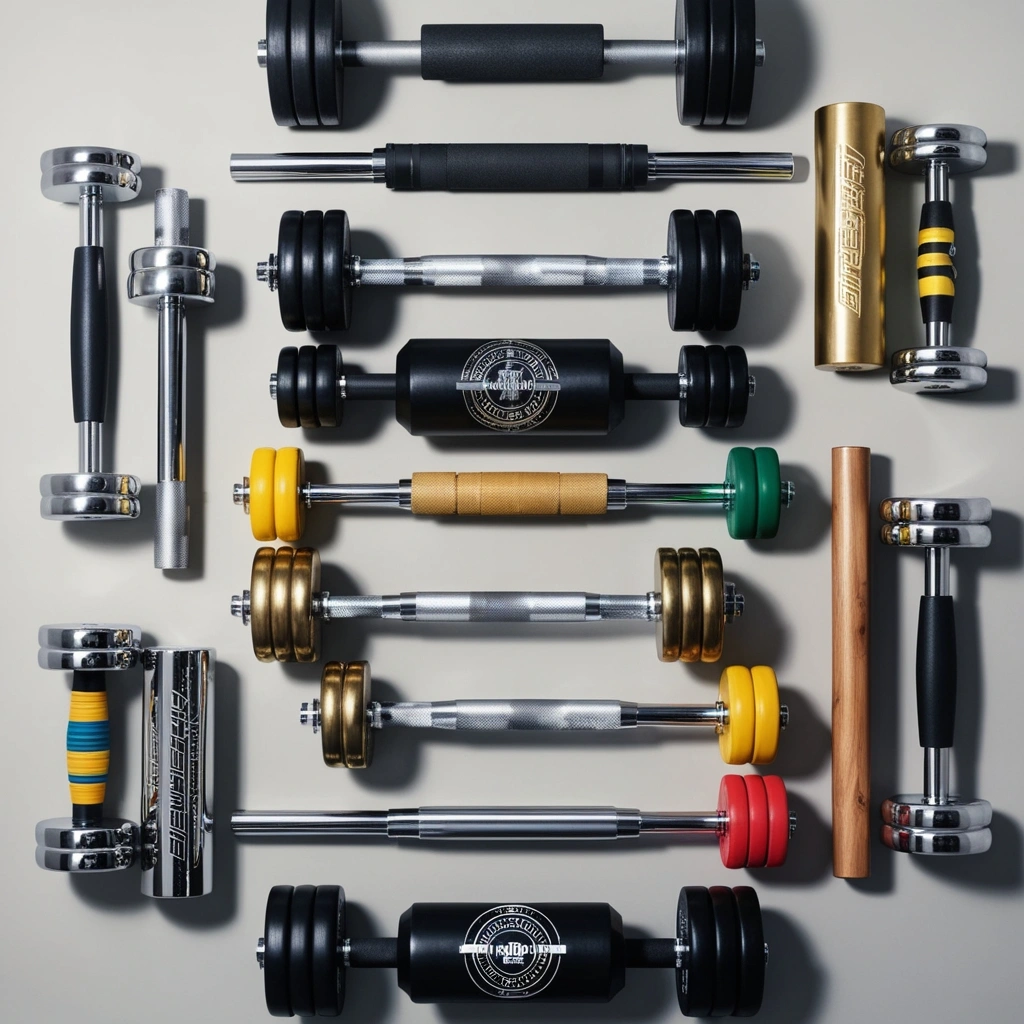
Barbell Guide of Care and Maintenance
You must care for and maintain your barbell. This is essential to keep its performance, longevity, and safety. Here are some important tips for keeping your barbell in optimal condition:
Cleaning and Disinfecting
- Clean your barbell after each use. This removes sweat, chalk, and debris that can build up on the surface. Use a mild soap or detergent and warm water to wipe down the shaft and sleeves thoroughly.
- Disinfect your barbell often. This kills bacteria and germs, especially if it’s used in a shared gym. Use a disinfectant spray or wipes for fitness equipment. Use one recommended by the manufacturer and follow its instructions.
Proper Storage
- Store your barbell in a clean, dry place. Keep it away from moisture and humidity. This will prevent rust and corrosion. Invest in a barbell rack or storage system to keep your barbell organized and protected when not in use.
- Don’t store your barbell in direct sunlight or extreme heat. Prolonged exposure can damage its coating or finish. Store the barbell in an upright position to prevent warping or bending of the shaft.
Handling and Usage Tips
- Handle your barbell with care. Avoid dropping or banging it on hard surfaces. That can damage the coating or finish. Use proper lifting techniques and avoid excessive force or impact during workouts.
- Inspect your barbell regularly for signs of wear, damage, or loose components. Check the knurling for wear. Check the sleeves for smooth rotation. Also, check the coating for scratches or chips.
- Rotate the barbell often during use. This spreads the weight evenly and prevents uneven wear on the coating or finish. Avoid using rough tools or harsh chemicals. They can damage the barbell’s surface.
Conclusion
Barbells are not just tools. They embody strength, toughness, and dedication. Barbells are the backbone of strength training. They have stood the test of time and evolved to meet the needs and preferences of lifters worldwide.
In this guide, we’ve explored barbells. They come in many types, from traditional to specialty. We’ve looked at materials and maintenance tips. We’ve delved into the details of choosing the right barbell for your needs. We’ve looked at factors such as weight capacity, grip, shaft width, and brand reputation.
You might be a seasoned powerlifter. Or, an Olympic weightlifting enthusiast. Or, just a casual gym-goer. The right barbell can boost your training and help you reach your fitness goals. Invest in a high-quality barbell. Adopt proper care. Then, you can enjoy a lifetime of strength and progress.
As you continue your strength training journey, remember: that the barbell is more than just a tool. It’s a symbol of dedication, perseverance, and personal growth. Embrace the challenge, push your limits, and let the barbell guide you on the path to greatness.
With each rep, set, and lift, you’ll build physical strength. You’ll also build mental fortitude. You’ll transform not only your body but also your mind and spirit. So, grip the barbell tight, stand tall, and let your strength shine through.
The journey is yours to embrace, and the possibilities are endless. Here’s to the barbell. It’s the timeless symbol of strength. It’s the catalyst for change. And, it’s the ultimate friend on your journey to greatness.

